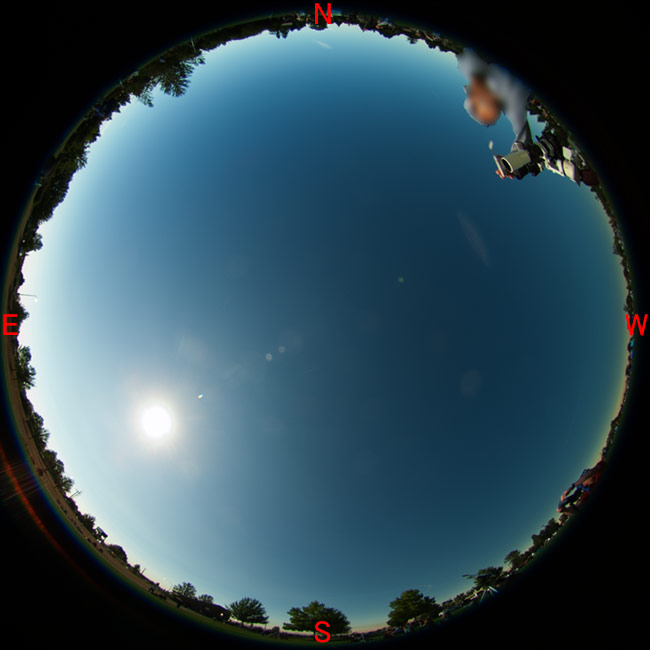Movement of the shadow cone during the totality (Aug 21, 2017)
Changeover swith of taken time in PDT(-0700)
EM = Eclipsed Magnitude
Movement of shadow cone with a whole-sky fish-eye photo lens
Expanded image in the Cartesian coordinates
| Date & Time: | Aug 21 2017 PDT(-0700) |
| Program mode (spot integral) |
| Optical: | SIGMA f=4.5mm EX Circular DC |
| Fixed on tripod |
| Digital Camera: | Nikon D50 (Remodeled) |
| Location: | Salem, Oregon, USA |
| Camera Settings: | Recording format...12bit CCD-RAW, converted to 16bit TIFF (3008×2000) |
| CCD Sensitivity...ISO200, White-Balance...Manual |
In this page, I have set nine whole-sky images during the totality on Aug 21, 2017 in interval of 20 seconds enabling to switch the display.
An upper flame shows the while taken images and a lower one has been expanded and shown surroundings at 360° by converting to the Cartesian coordinates.
During the totality, observers are in the lunar umbra fallen on the ground, called the "shadow cone".
At the location we observed, the shadow cone ran through from west to east direction with a breakneck ground speed of approximately 3600 km/h (2250 miles/h).
By switching images I have provided in chronological order, you can see the looked up-appearance of shadow cone's movement.
The shadow cone in this eclipse has a diameter of about 140 km, it can be seen that the lower surrounding skies are bright like colors of the sunset.
You can detect the Venus in higher southern sky as a tiny light spot in the images.
The totality occurred in the morning and the sun positioned easterly, maybe you can see the moving shadow cone away to lower eastern sky more clearly in images of latter half of the totality.


